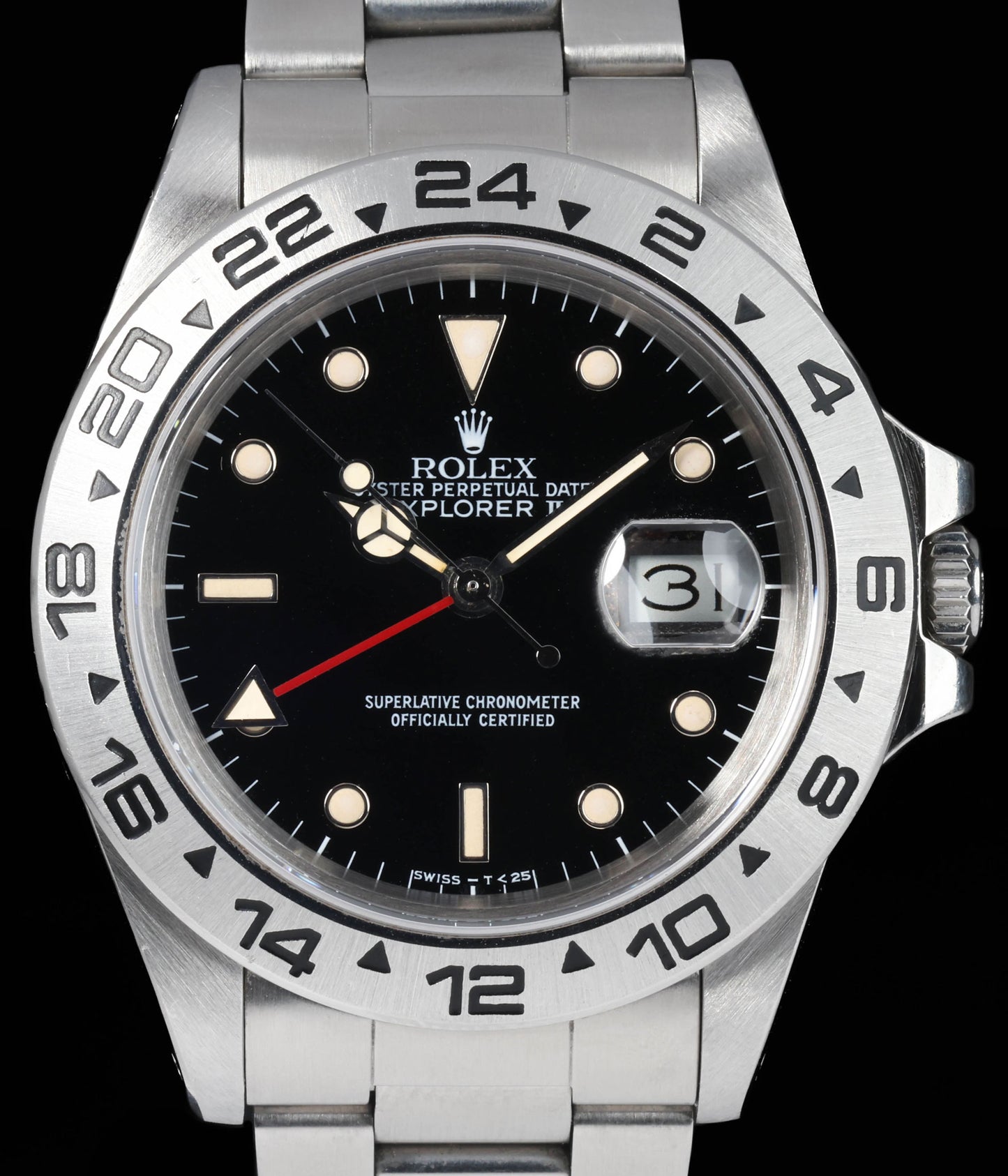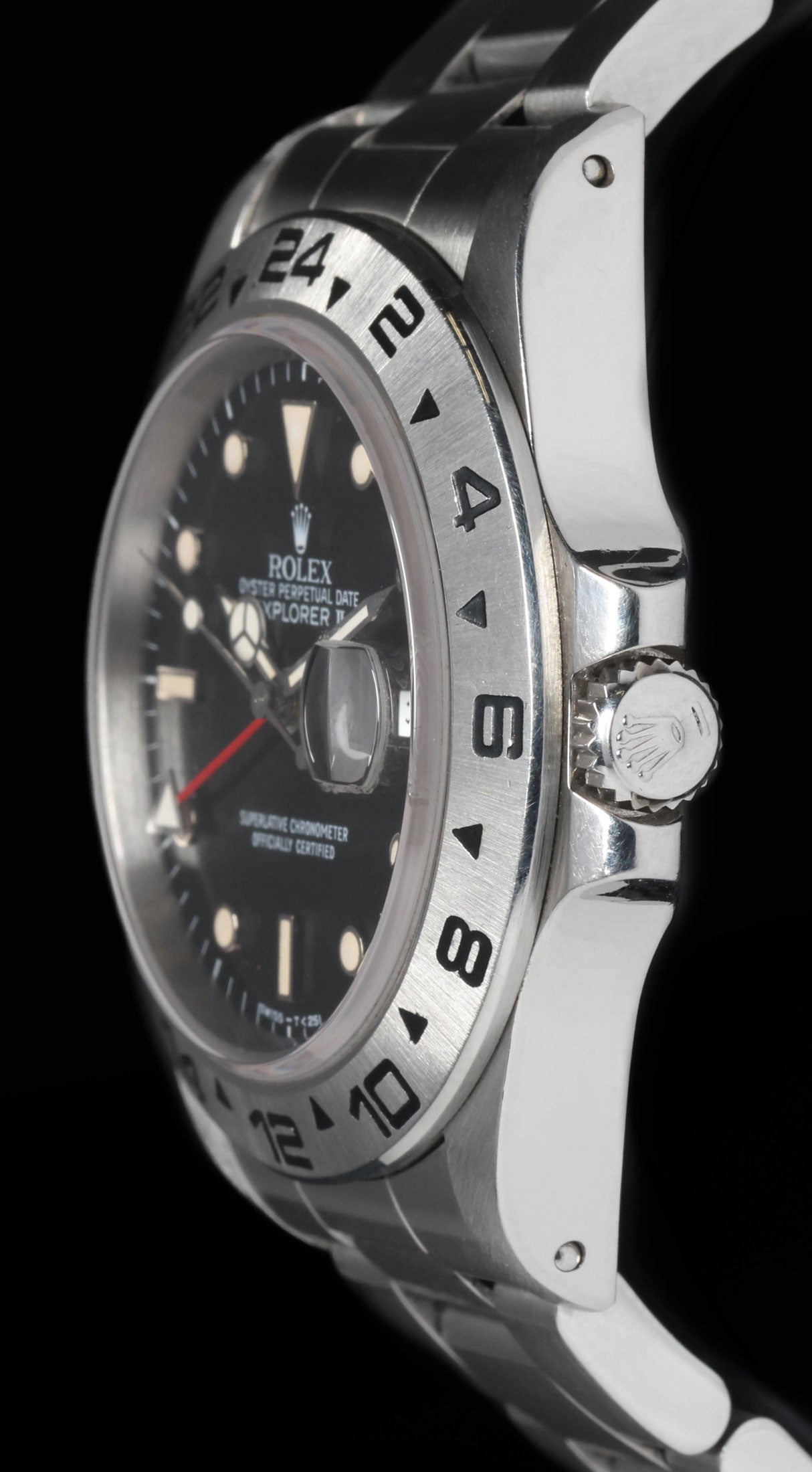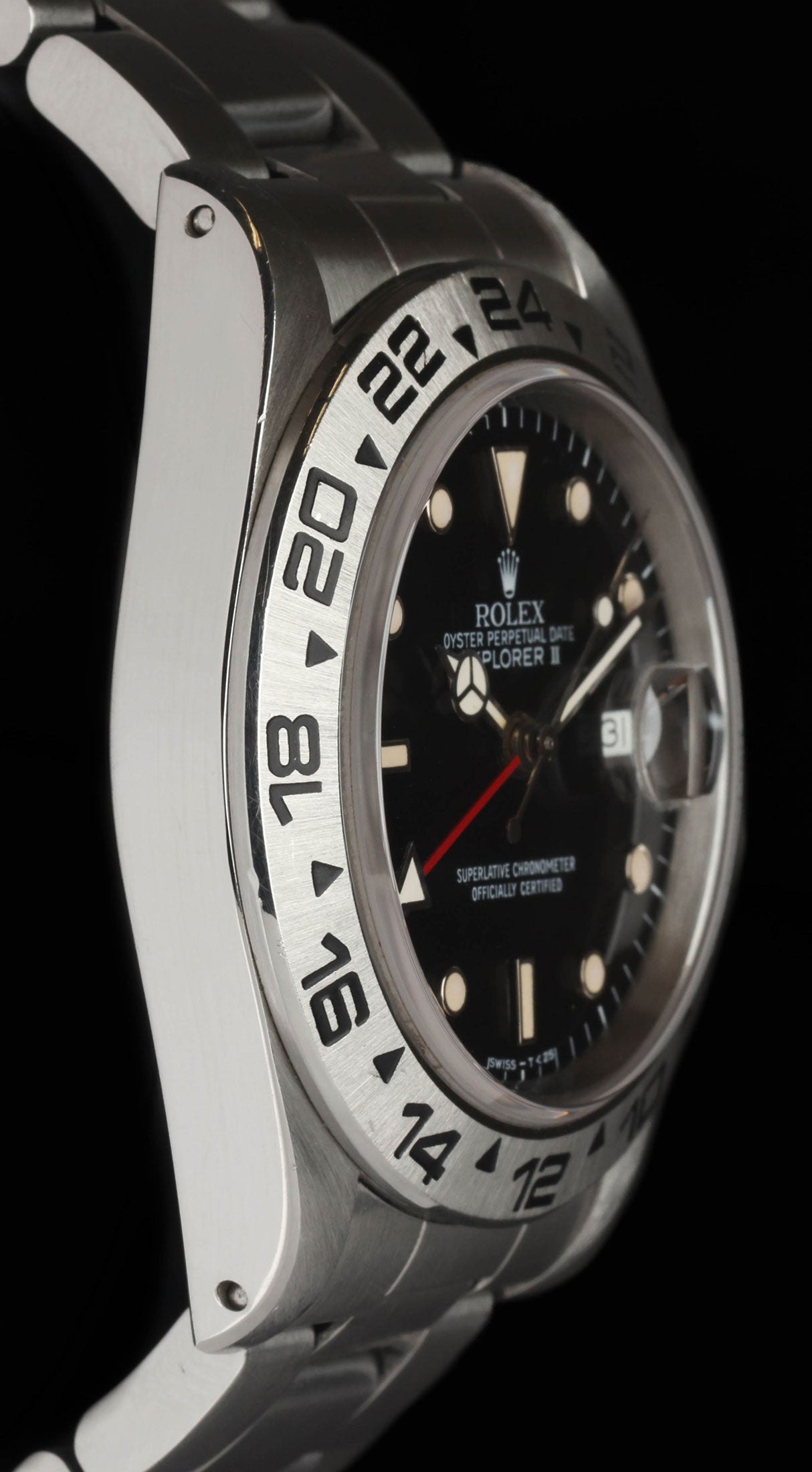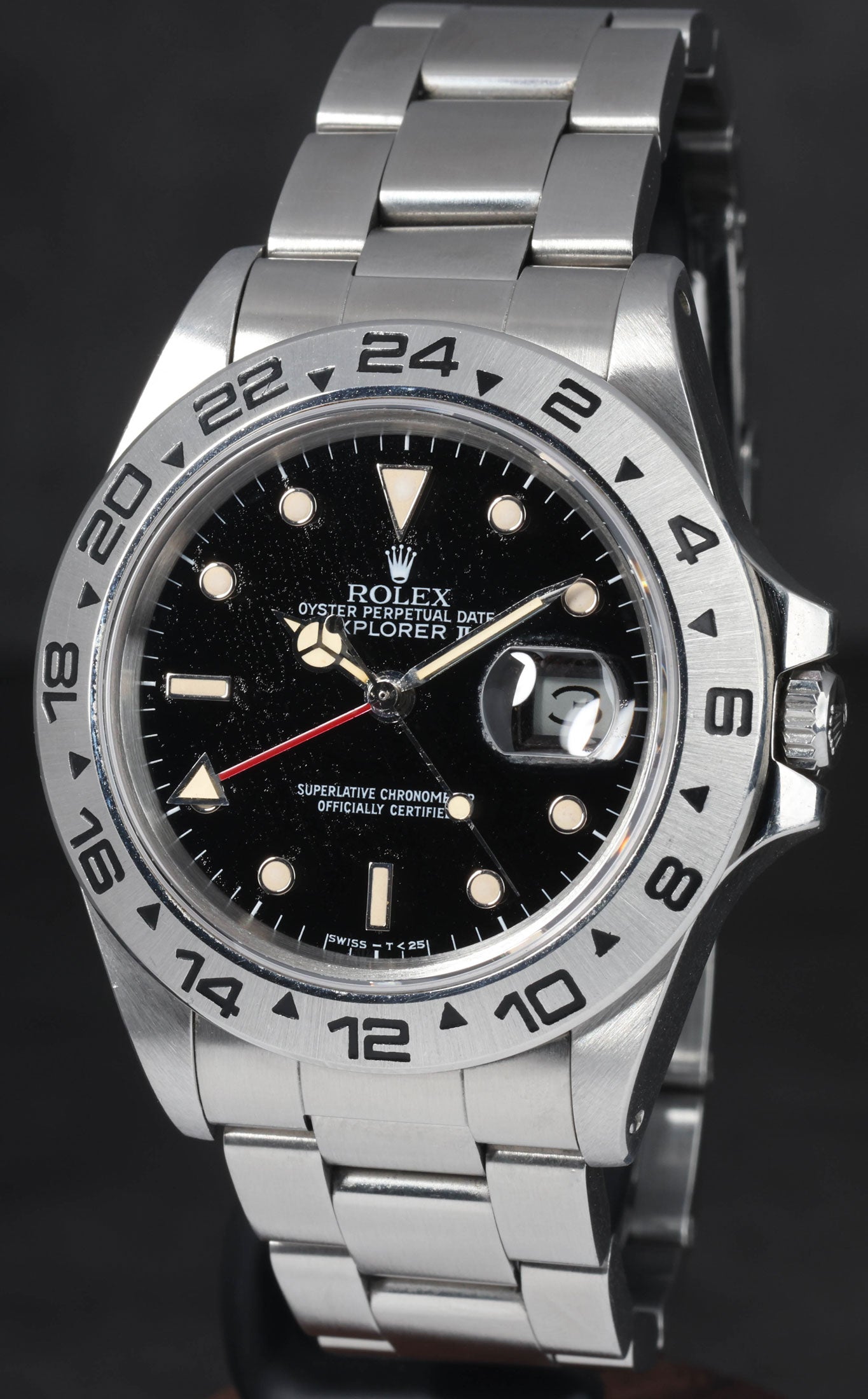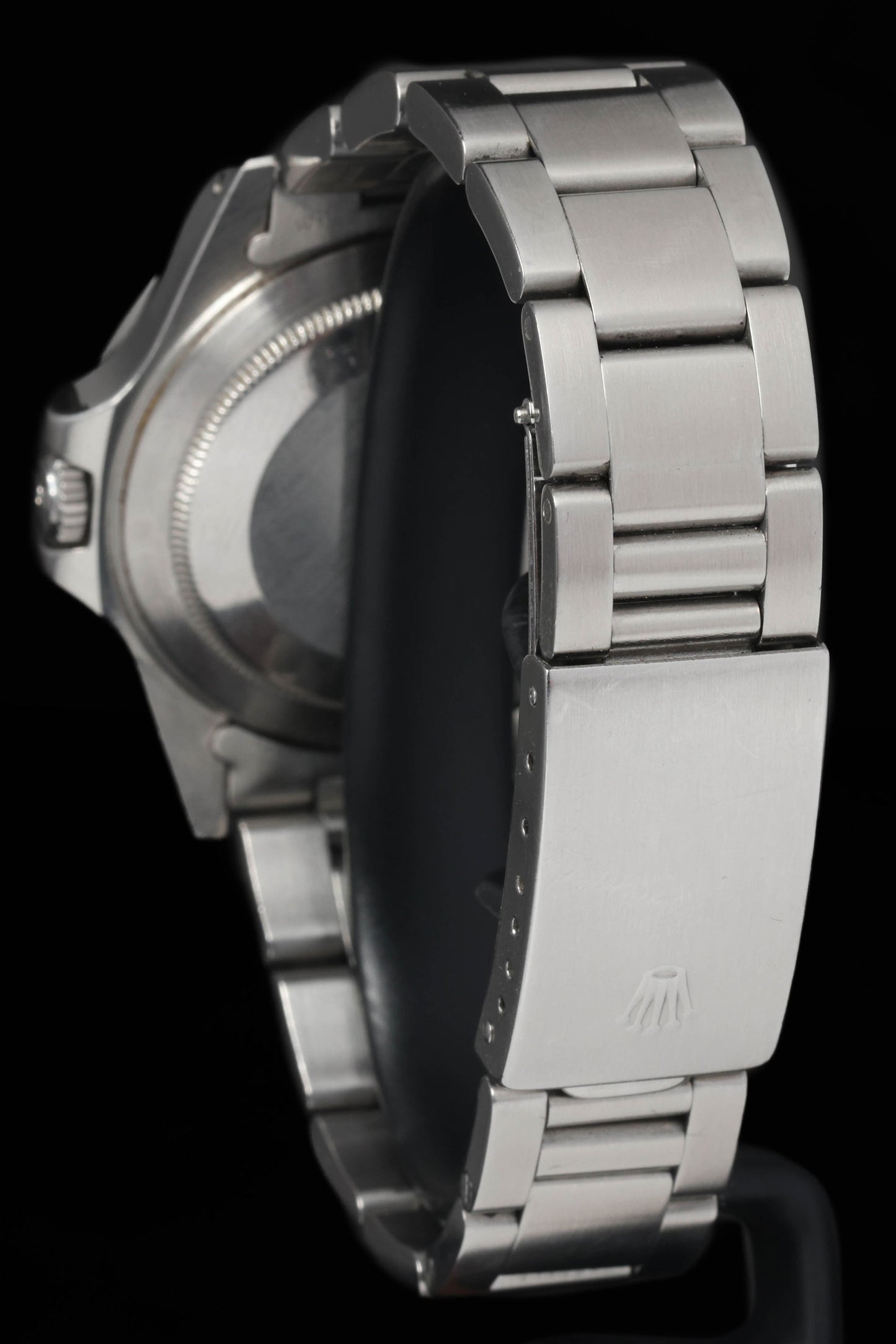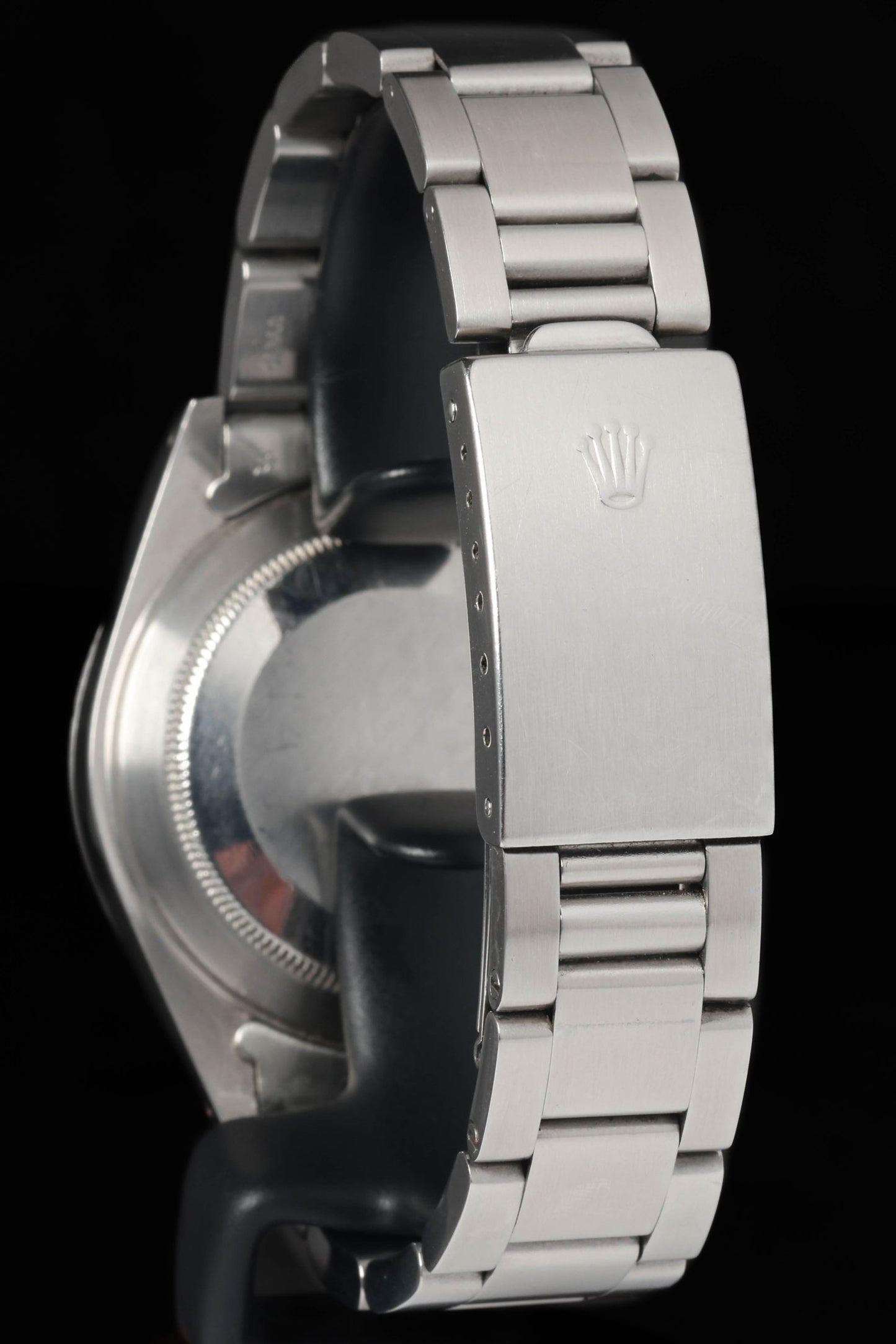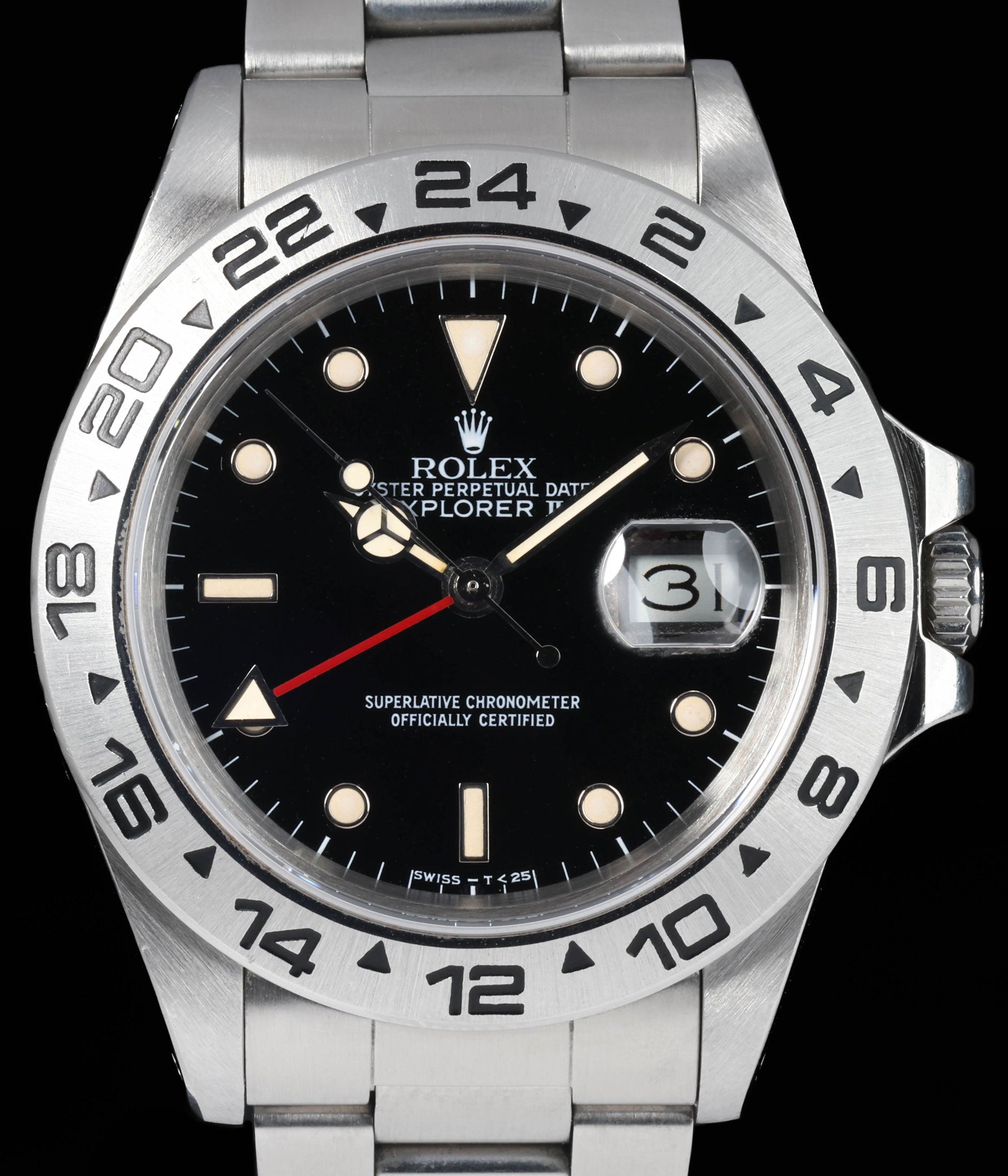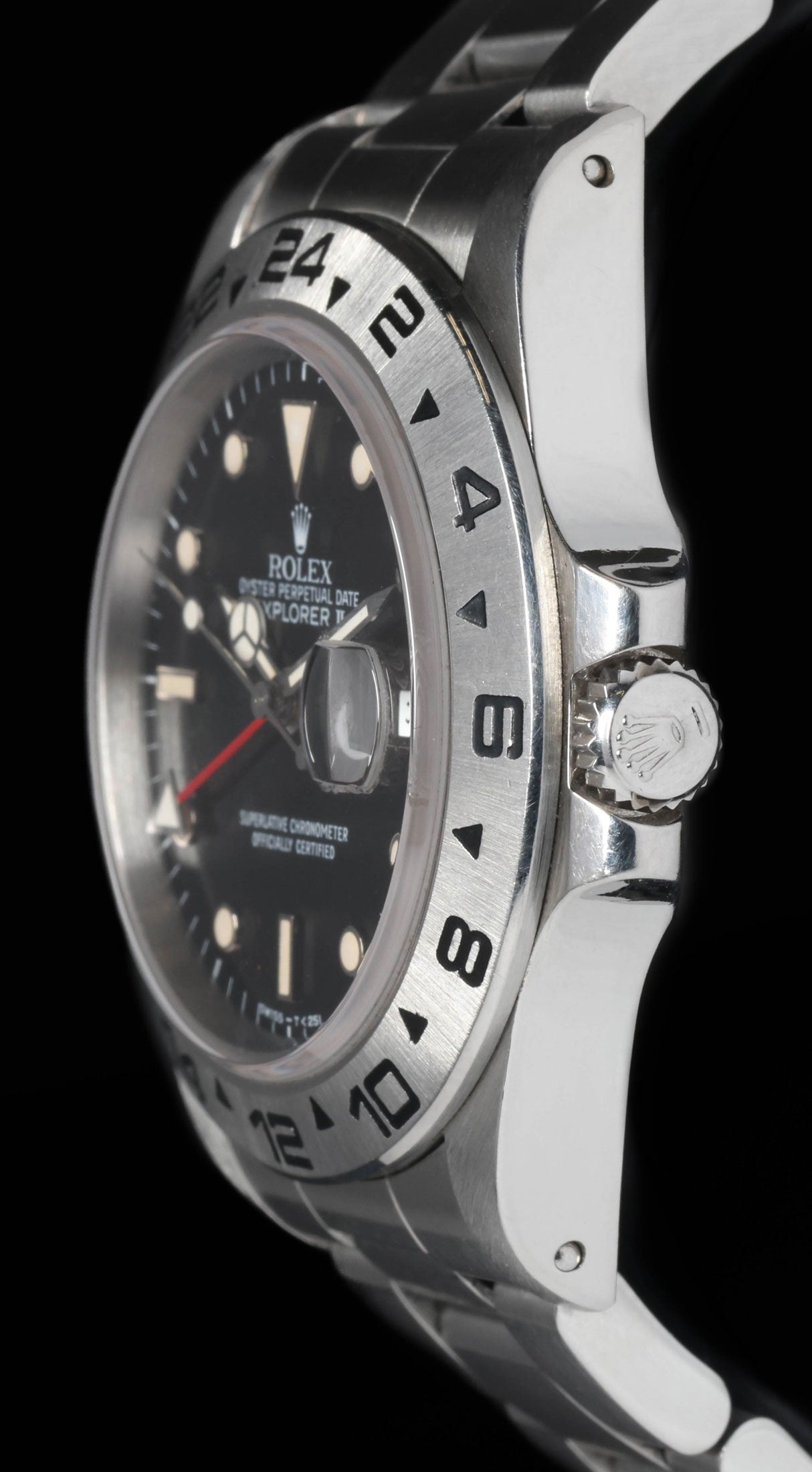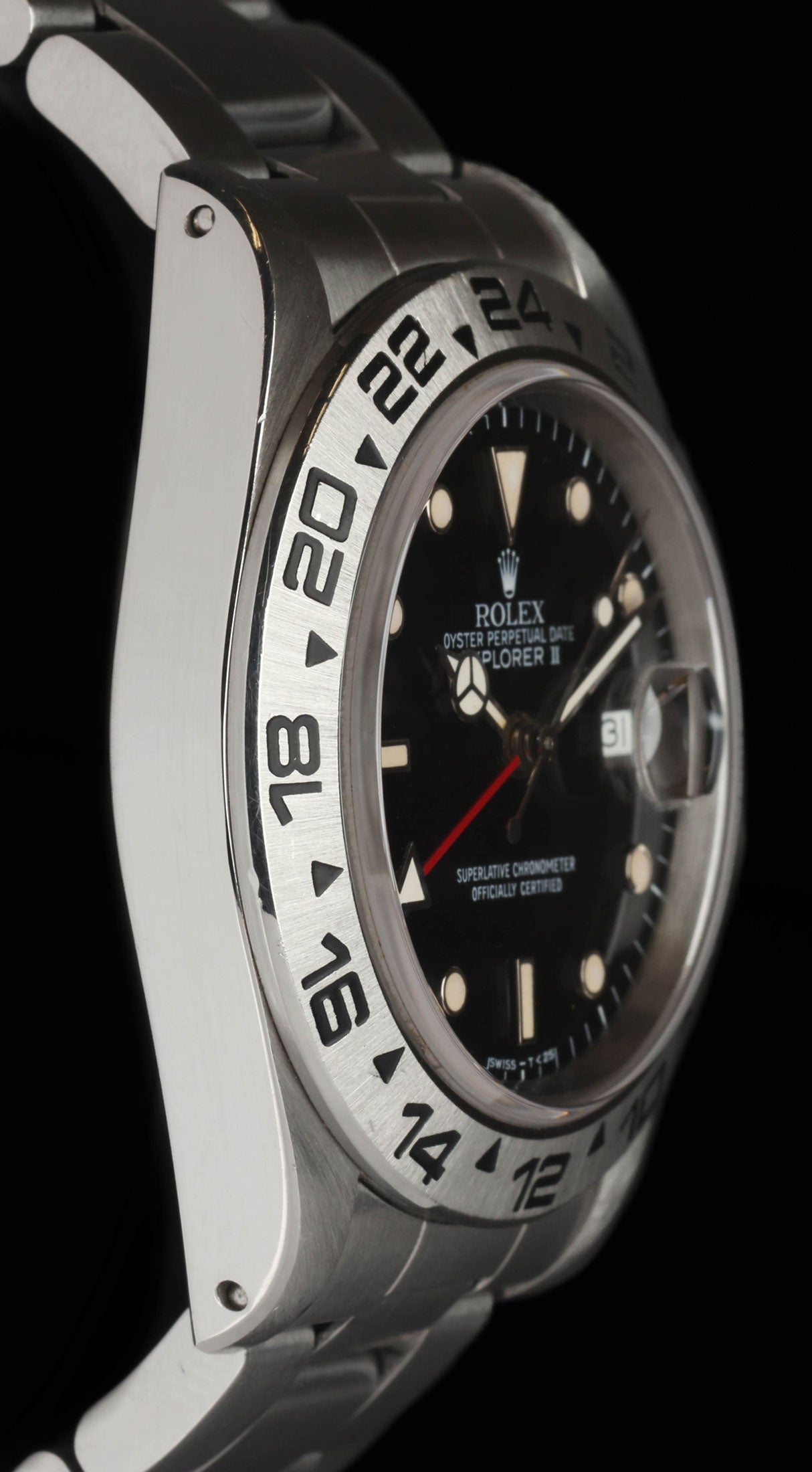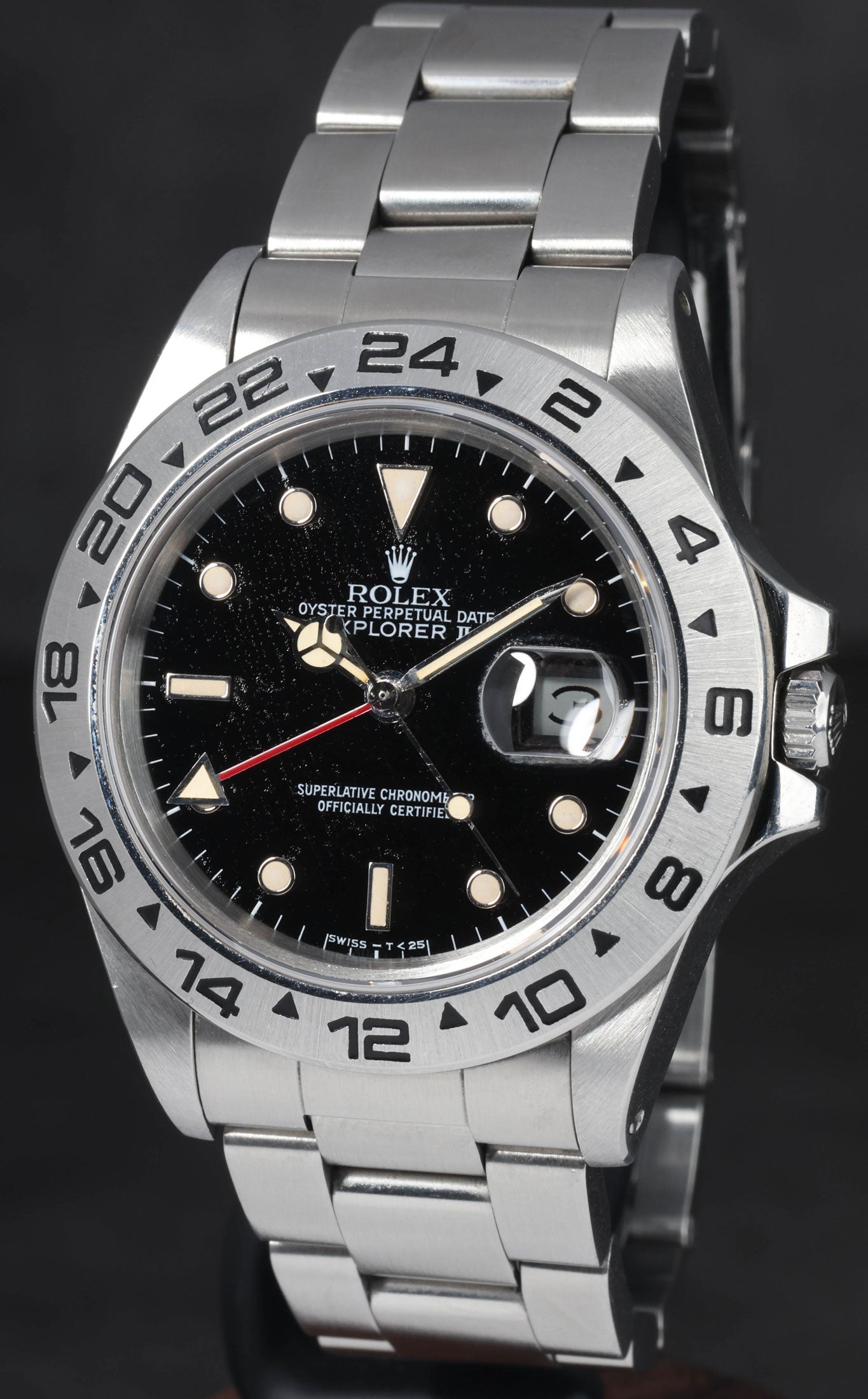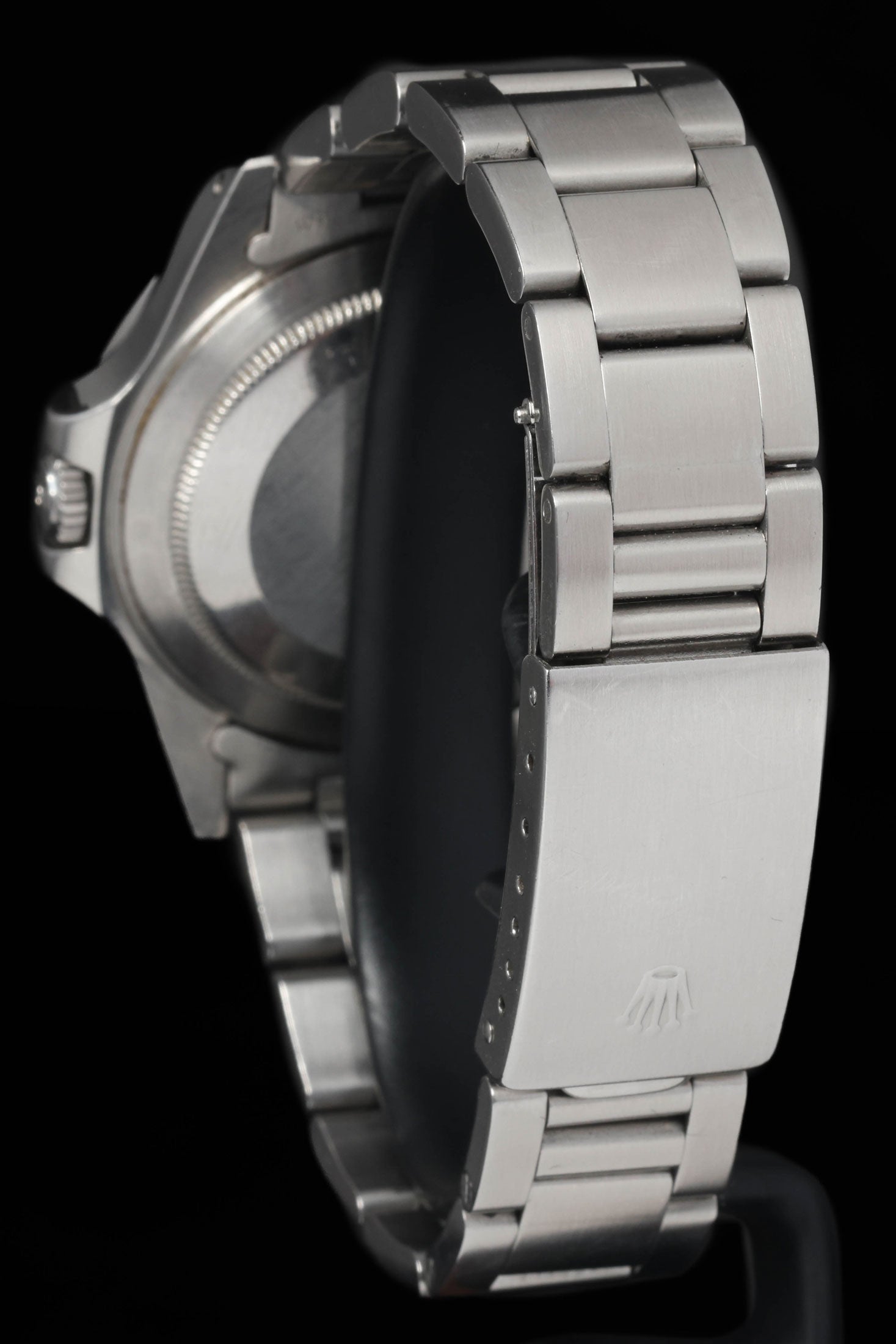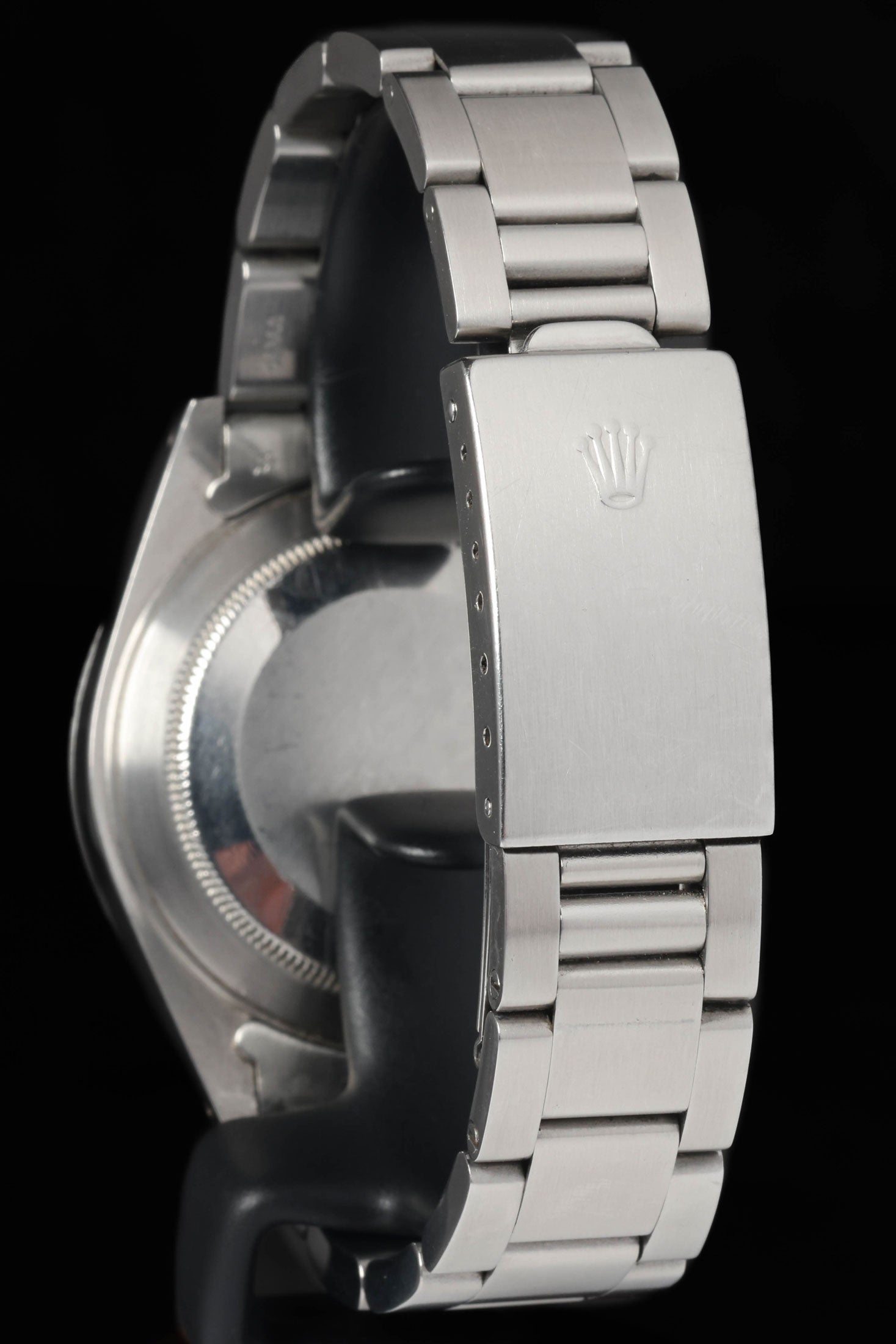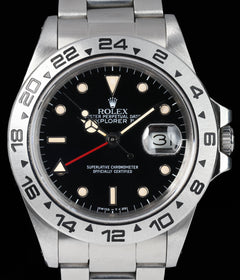Crown Vintage
Rolex Explorer II 16550 'Stardust Dial' 40mm 1985
Rolex Explorer II 16550 'Stardust Dial' 40mm 1985
Couldn't load pickup availability
Rolex Explorer II 16550 'Stardust Dial
The case of this Explorer II 16550 retains its excellent form, with crisp lugs and strong definition throughout, showing only light hairline marks from careful wear. The Oyster bracelet is equally well preserved, with minimal stretch and a solid, reassuring feel on the wrist. The black dial is a standout feature, remaining in superb vintage condition. Its applied white gold markers and hands have aged to a warm, creamy patina, providing a striking contrast against the dial surface. Uniquely, the dial also displays a subtle “stardust” effect, visible under light, adding texture and individuality that elevates this example beyond the standard 16550. Overall, it is an exceptionally attractive and honest piece.
Share
Why we love this watch
Why we love this watch
The Rolex Explorer II 16550 Black Dial: A Transitional Icon
Introduction
The Rolex Explorer II reference 16550 represents one of the most important transitional models in the history of the Explorer line. Produced for only a relatively short period, it bridged the gap between the original reference 1655—nicknamed the “Freccione” for its large orange 24-hour hand—and the long-running 16570. With its updated movement, sapphire crystal, and revised case design, the 16550 marked the beginning of the modern Explorer II. The black dial variant, in particular, has developed into one of the most distinctive versions, admired for its clarity, balance, and rarity compared to its white “Polar” counterpart.
This model did more than simply refine the concept of the Explorer II. It introduced a host of innovations that pushed the watch into a new era, while retaining the DNA of a tool watch built for explorers and adventurers. The black dial 16550 embodies Rolex’s philosophy of evolution over revolution, a watch that looked forward without abandoning its past.
The Explorer II Story
The Explorer II was first introduced in 1971 with the reference 1655. Unlike the Submariner, designed for divers, or the GMT-Master, made for pilots, the Explorer II targeted a very specific niche: spelunkers, mountaineers, and adventurers operating in conditions where day and night could blur into one. The 24-hour fixed bezel and large orange hand allowed the wearer to distinguish between AM and PM, a practical necessity in caves or polar regions.
While the 1655 was unmistakable with its crowded dial and distinctive orange hand, it was not a mainstream success. Its singular purpose limited its audience, though it would later gain cult status. By the mid-1980s, Rolex sought to modernise the model with a cleaner design, an updated movement, and a more versatile identity. The result was the Explorer II reference 16550.
Case and Bezel Design
The 16550 introduced a significantly redesigned case, sized at 40mm, aligning it with Rolex’s other professional models of the period. The proportions were more balanced compared to the 39mm 1655, with broader lugs and crown guards for improved protection. The case was crafted in stainless steel, with Rolex’s Oyster construction ensuring robustness and water resistance.
The bezel retained the fixed 24-hour scale, a hallmark of the Explorer II, but the font and layout were refined. The numerals became bolder and more modern, improving legibility while also giving the watch a sleeker aesthetic. The satin finish of the bezel further distinguished the Explorer II from the rotating bezels of the GMT-Master, reinforcing its identity as a dedicated tool watch.
The Black Dial Variant
The black dial version of the 16550 introduced a sense of elegance to the Explorer II line. Where the white dial “Polar” version was bright and utilitarian, the black dial was understated and versatile. The matte black surface provided excellent contrast for the applied white gold hour markers, which were filled with tritium lume for low-light visibility.
Over time, these tritium markers have often aged to warm tones of cream or yellow, giving vintage examples of the black dial 16550 a unique character. The hands, also filled with tritium, typically developed similar patina, harmonising beautifully with the dial. This natural ageing process gives each watch individuality and is part of the appeal of owning an Explorer II from this period.
One of the strengths of the black dial version was its legibility. The stark contrast between the dial and the hands ensured clear readability of both the local time and the 24-hour hand. The bright red 24-hour hand, thinner than the oversized version of the 1655, provided a functional yet discreet way to track a second time zone.
Movement: The Calibre 3085
The most important innovation introduced with the 16550 was the calibre 3085 movement. This was the first movement in the Explorer II line to feature an independently adjustable 24-hour hand. While the 1655’s orange hand was fixed to the hour hand, the calibre 3085 allowed the wearer to set the 24-hour hand separately, enabling the watch to function as a dual-time zone piece.
This development significantly expanded the Explorer II’s utility. What had been a watch for cave explorers could now also serve travellers, pilots, and professionals who needed to track time across different regions. In many respects, the 16550 transformed the Explorer II from a niche tool watch into a versatile travel companion.
The calibre 3085 was robust, reliable, and chronometer-certified, reflecting Rolex’s reputation for precision and durability. It operated at 28,800 vibrations per hour, providing smooth seconds hand motion and improved accuracy over earlier movements.
Sapphire Crystal and Modern Details
The 16550 was also the first Explorer II to feature a sapphire crystal, replacing the acrylic crystals of earlier references. This update improved scratch resistance and gave the watch a more modern appearance. The Cyclops lens over the date window at 3 o’clock became sharper and more defined under sapphire, enhancing legibility.
Other updates included a more refined Oyster bracelet, reference 78360, which provided greater solidity and comfort compared to earlier bracelets. These incremental improvements positioned the 16550 as a thoroughly modern sports watch while retaining the ruggedness expected of the Explorer line.
A Short Production Run
One of the reasons the 16550 is so significant today is its relatively short production run. Manufactured for only about four years, it was quickly replaced by the 16570. This brevity makes the 16550 a key transitional reference—rare enough to be noteworthy but produced in sufficient numbers to be attainable.
Within this short period, subtle variations emerged, particularly with the dials. The white dial versions were prone to turning a creamy ivory tone due to a defect in the paint, a trait that has become highly prized. The black dial versions, while less prone to dramatic transformations, often exhibit rich patina on the tritium lume, which is equally attractive in its own way.
Explorer II in the Rolex Line-Up
The Explorer II has always been somewhat of an outlier in Rolex’s professional range. It lacked the glamour of the Submariner, the celebrity status of the Daytona, or the versatility of the GMT-Master. Yet this was precisely its strength. The Explorer II embodied Rolex’s original ethos of creating watches for specific, practical purposes.
The 16550 redefined that purpose. By adding independent GMT functionality, Rolex broadened the watch’s appeal without compromising its identity. The fixed 24-hour bezel remained, distinguishing it from the GMT-Master, while the overall design became more refined and contemporary.
The Legacy of the 16550
The reference 16550 occupies a crucial place in the evolution of the Explorer II. It marked the end of the first generation and the beginning of the modern era. Its innovations—the calibre 3085, sapphire crystal, and updated case—set the template for the 16570, which would go on to enjoy a two-decade production run.
The black dial variant is especially important within this legacy. It balanced functionality with elegance, offering a more understated alternative to the white dial version while retaining all the technical advancements. Its relative rarity, short production span, and propensity to develop beautiful patina make it one of the most desirable Explorer II references today.
The Allure of Vintage Patina
One of the most charming aspects of the black dial 16550 today is the way these watches age. The tritium lume, once bright white, mellows into warm shades of cream, yellow, or even orange. Against the deep black background of the dial, this transformation creates a depth and character that no modern lume can replicate.
Each watch develops its patina differently, depending on wear, exposure, and storage, making every example unique. This individuality adds to the allure of vintage Rolex in general, and to the black dial 16550 in particular.
Final Thoughts
The Rolex Explorer II reference 16550 black dial is a landmark in the history of the model and of Rolex itself. It took the quirky, purpose-built ethos of the original 1655 and transformed it into a versatile, modern sports watch. Its 40mm case, sapphire crystal, and calibre 3085 movement ensured functionality and durability, while its understated black dial delivered elegance and legibility.
Though produced for only a few short years, the 16550 laid the foundation for everything that followed in the Explorer II line. The black dial version, with its natural patina and balanced design, stands as one of the most appealing vintage sports Rolex watches of its era.
Case & Bracelet
Case & Bracelet
Both the case and bracelet remain in excellent shape, revealing only subtle hairline marks from careful wear.
Dial & Hands
Dial & Hands
The dial and hands present in superb vintage form, with the hour markers and hands displaying a warm, creamy patina. Adding further character, the black dial reveals a subtle “stardust” effect.
Warranty & Condition
Warranty & Condition
Crown Vintage Watches provides a minimum 3-month mechanical warranty on pre-owned watches, from the date of purchase.
The warranty covers mechanical defects only.
The warranty does not cover damages such as scratches, finish, crystals, glass, straps (leather, fabric or rubber damage due to wear and tear), damage resulting from wear under conditions exceeding the watch manufacturer’s water resistance limitations, and damage due to physical and or accidental abuse.
Please note, water resistance is neither tested nor guaranteed.
Shipping and insurance costs for warranty returns to us must be covered by the customer. Returns must be shipped via traceable courier. Return shipment must be pre-paid and fully insured. Collect shipping will be refused. In case of loss or damages, the customer is liable.
Our Pledge
At Crown Vintage Watches, we stand by the authenticity of every product we sell. For added peace of mind, customers are welcome to have items independently authenticated at their own expense.
Condition
Due to the nature of vintage timepieces, all watches are sold as is. We will accurately describe the current condition and working order of all watches we sell to the best of our ability.
Shipping & Refund
Shipping & Refund
